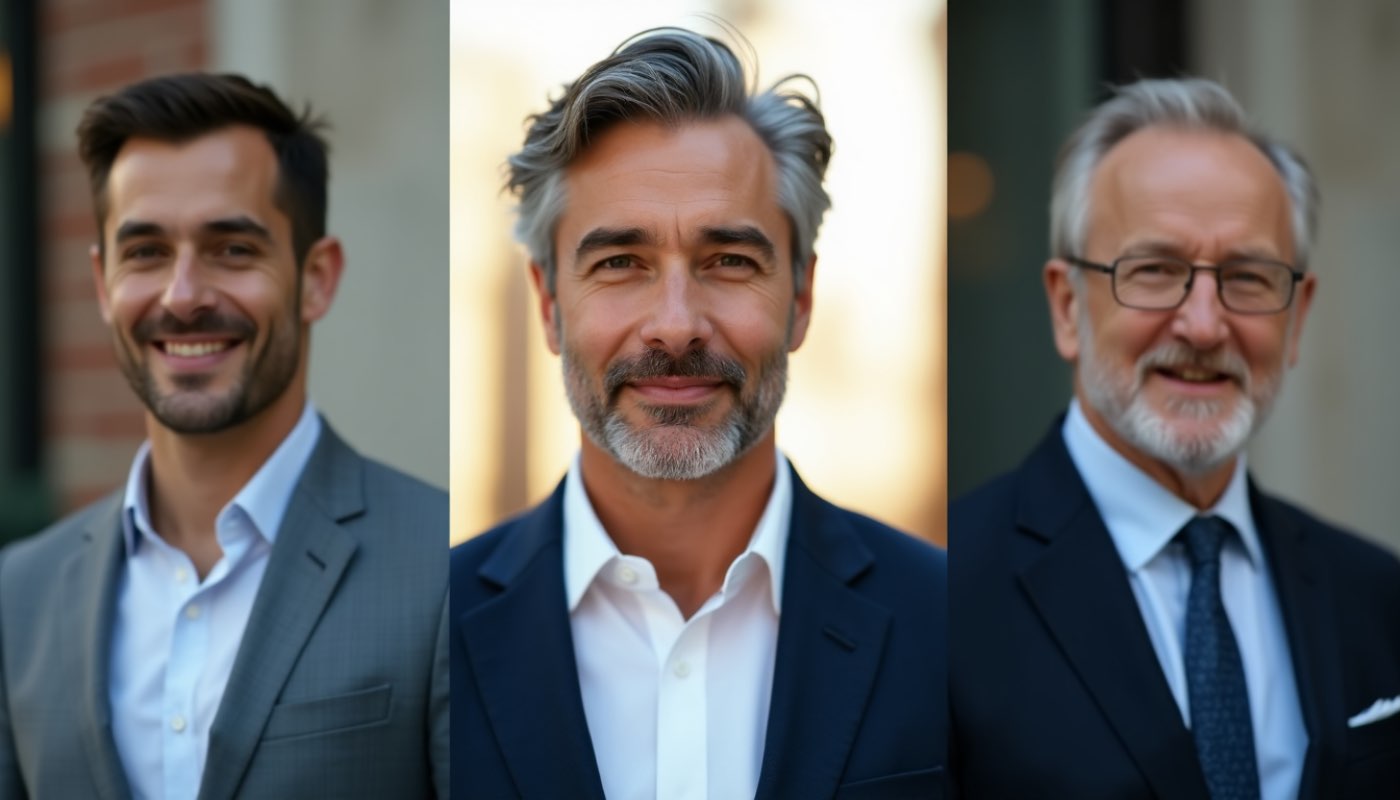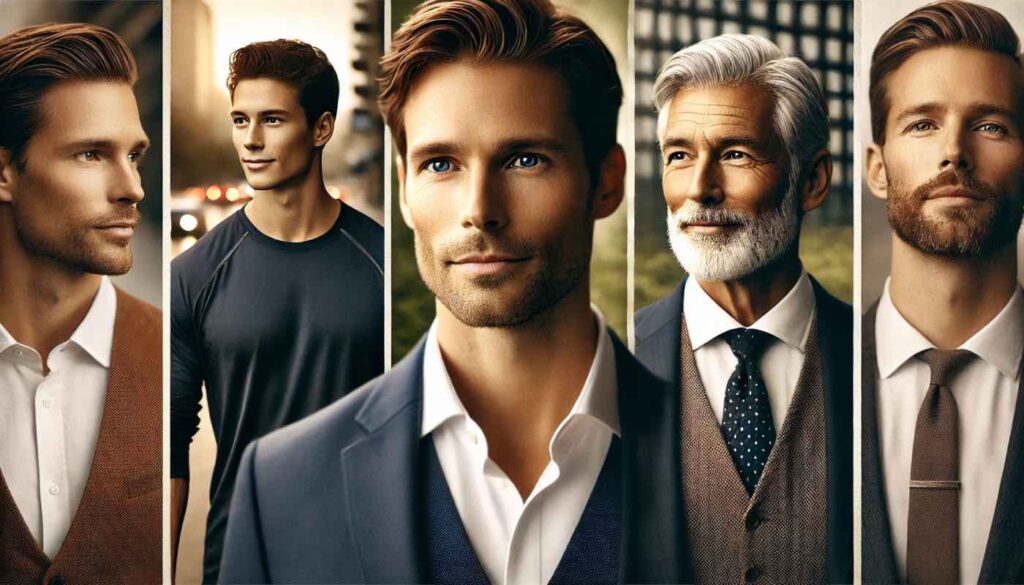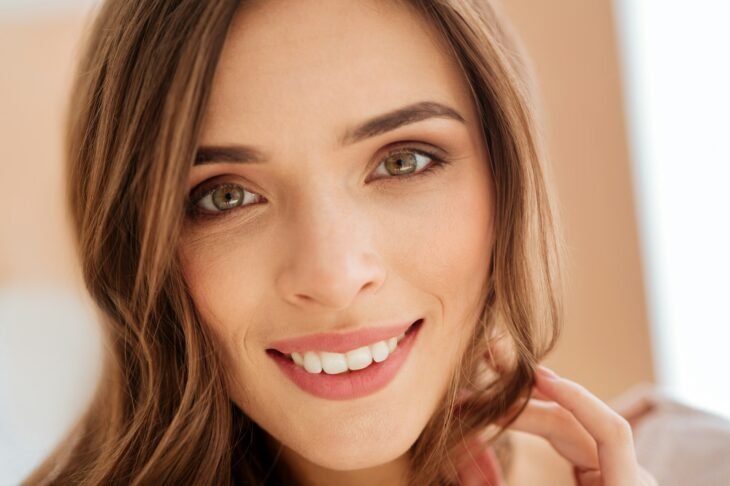
At What Age Are Men Most Attractive?
What age do men look their best? This question fascinates researchers, dating experts and singles. The dating world has seen endless discussions about this topic.
Most people think men hit their prime in their twenties. The reality paints a different picture. A man’s attractiveness combines physical looks, emotional maturity and social standing. These aspects keep changing as he ages. His appeal to potential partners depends on many factors – from biology and hormones to career achievements and personal development.
This detailed piece gets into scientific studies, expert views and ground dating statistics. It reveals the truth about when men peak in attractiveness and how age affects it. You’ll learn practical ways to enhance your appeal at any age.
Contents
The Science Behind Male Peak Attractiveness
The complex mix of genes, hormones, and physical traits shapes male attractiveness. Scientists have learned fascinating things about what makes men attractive at different ages.
Biological factors affecting male attractiveness
Physical strength and dominance are the foundations of male attractiveness. Studies reveal that a man’s strength determines 70% of his attractiveness. A man’s genetic quality shows through several masculine traits:
- Facial symmetry and averageness
- Prominent jaw and brow ridges
- Muscular build and broader shoulders
- Optimal body mass distribution
These features go beyond mere looks – they signal good health and genetic quality to potential mates.
Hormonal changes through aging
Testosterone shapes a man’s attractiveness throughout his life. A man’s testosterone levels rise and fall daily and seasonally, which affects how he looks and behaves.
Men’s hormones change substantially as they age. Their testosterone levels typically drop, leading to what scientists call ‘andropause’ – the male version of menopause. Healthy hormone levels become more important to maintain attractiveness as men get older.
Research findings on peak attraction age
Research reveals some unexpected patterns about when men are most attractive. Studies show that men’s sexual appeal peaks at 50, though this varies in different situations.
Women find men between 25 and 30 most physically attractive. The core team of researchers also found that successful hunters and men with more resources rank higher in attractiveness, especially in certain groups.
Age and attractiveness share a complex relationship. Men might peak later in online dating, but younger men often have an edge in face-to-face meetings, especially those who look healthy. Developmental psychologists point out that lasting relationships usually happen between people close in age, regardless of initial age preferences.
Physical Prime vs. Overall Appeal
Male appeal presents an interesting paradox between physical prime and overall attractiveness. Research shows that men reach their physical peak at different ages. This creates a complex timeline of attractiveness throughout their lives.
Athletic performance and physical appearance
Men’s strength usually peaks between their late 20s and early 30s. Different athletic capabilities reach their peak at various ages:
- Speed and explosive power excel in the early 20s
- Strength maximizes in the 30s to early 40s
- Endurance peaks in the late 20s to 30s
Research indicates that men in their 20s naturally maintain peak physical appearance due to optimal hormone levels and strong metabolism. These younger men find it easier to stay fit because they face fewer work-life balance challenges.
Grooming and style development with age
Proper grooming becomes increasingly important for men’s attractiveness as they age. Research suggests that well-groomed men receive higher attractiveness ratings when they enter their 30s and 40s.
Men can effectively curb aging signs by investing in their appearance through proper skincare, regular grooming, and style awareness. Simple yet essential practices include:
- Daily face cleansing and moisturizing
- Regular hair maintenance
- Attention to dental hygiene
- Strategic wardrobe choices
The role of fitness and health
Physical activity is a vital factor in maintaining attractiveness at any age. Research shows that regular exercise provides multiple benefits that improve overall appeal:
- Physical benefits:
- Better cardiovascular health
- Improved muscle strength
- Improved posture
- Weight management
- Psychological advantages:
- Reduced stress levels
- Improved mental health
- Boosted self-confidence
- Better sleep quality
Studies reveal that men who stay physically active consistently receive higher attractiveness ratings. Research indicates that body confidence plays a most important role in male viewpoints of self, which directly relates to their motivation to maintain healthy behaviors.
The Sweet Spot: Men in Their 30s
Research shows that men reach their peak attractiveness in their thirties. They blend physical vitality with emotional depth and professional success at this age. Studies link facial attractiveness to earnings. Men in their mid-30s earn 2.0 to 3.3 percentage points more than those with average looks.
Career stability and confidence
Most men build strong career momentum and financial stability by their thirties. They’ve built valuable skills and professional networks instead of just starting out. Studies show that career growth improves physical appearance over time. This mix of professional success and self-improvement creates a strong foundation to date successfully.
Emotional maturity advantages
Men’s emotional intelligence and relationship skills improve notably in their thirties. The core emotional maturity markers include:
- Good communication and conflict resolution
- Stable and consistent relationships
- Better empathy and understanding
- Strength in facing challenges
- Dedication to personal growth
These traits make men in their thirties attractive to potential partners. They know how to handle relationship complexities and maintain healthy bonds.
Dating market dynamics
Men in their thirties enjoy unique advantages in dating. They can date from a wider pool, as women in both their twenties and thirties see them as potential partners. Several reasons explain this broader range:
- Better choices in relationships
- Clear understanding of relationship needs
- Good work-life balance
- Deeper appreciation for emotional connection
Physical attributes meet emotional growth perfectly for men in their thirties. By this age, they’ve developed enough confidence to value real connections over surface-level attraction. This change in view, combined with their lifestyle and emotional maturity, creates the perfect time to build meaningful relationships.

What Women Really Want at Different Ages
Research reveals fascinating patterns in what women look for in male partners at different ages. Studies show women of all ages tend to prefer partners who are slightly older.
Age preferences by demographic
Research demonstrates that women’s attraction to slightly older men stems from human bi-maturation process. A detailed study with 17,254 single women from 147 countries shows how women’s partner age priorities change as they get older. The research highlights several key findings:
- Women between their late twenties and early thirties look for partners who want to be parents
- After 35, women become more open to dating younger partners
- Women value confidence and assertiveness more with age
Changing priorities in partner selection
Life stages play a big role in how women choose their partners. Their reproductive timeline and personal goals align with social expectations about the right time for life milestones.
The value placed on different partner qualities changes with age:
- Early Career Years (20s):
- Physical looks matter more
- Career growth potential stands out
- Similar values become essential
- Family Formation Period (Late 20s-Early 30s):
- The desire to find someone who wants children peaks around age 30
- Money stability is vital
- Emotional maturity becomes key
Cross-generational dating views
Modern dating shows new patterns that challenge traditional views about age gaps. A recent survey shows 63% of women believe age isn’t the main factor in dating anymore. About 59% would consider dating someone younger.
The research reveals 35% of women have become more accepting of age-gap relationships. This reflects both changing social norms and women’s growing financial independence. While women used to prefer older partners for stability and resources, they now focus more on emotional connections and shared values.
These findings suggest that a man’s attractiveness depends on various factors that matter differently based on a woman’s life stage and personal priorities.
Maximizing Your Attractiveness at Any Age
Becoming skilled at attraction needs an integrated approach that surpasses age-specific advantages. Men who actively work on self-improvement rate higher in attractiveness assessments, whatever their age.
Building confidence and character
A man’s most magnetic quality is confidence. Men who show genuine confidence get 33% more responses in dating scenarios. Successful men build lasting confidence by focusing on:
- Personal achievement tracking
- Goal-setting and completion
- Self-acceptance practices
- Positive self-image development
- Regular social connections
Research shows that men create trustworthy and attractive first impressions through slow, purposeful movements.
Lifestyle optimization tips
Physical appearance and lifestyle choices play significant roles in attractiveness. A UCLA study found women rated “built” men more sexually desirable than both thin and overly muscular body types. These lifestyle elements boost appeal:
- Regular exercise routine
- Consistent grooming practices
- Well-fitted wardrobe selection
- Healthy sleep patterns
- Balanced nutrition
Men who do volunteer work are rated substantially more attractive for long-term relationships. This shows the value of mixing physical maintenance with character growth.
Dating strategy adjustments
Today’s dating scene needs adaptability and smart thinking. Men who stay authentic in their dating profiles get higher engagement rates. Those who used positive words like “creative” and “ambitious” saw a 33% increase in responses.
Winning dating strategies include:
Digital Presence Optimization Men with outdoor photos in their dating profiles got 19% more messages. This proves the value of smart profile creation.
Social Skills Development Men who tell engaging stories come across as more attractive potential partners. Good communication skills make a real difference.
Activity-Based Dating Men carrying musical instruments were three times more likely to get positive responses when approaching potential partners. This shows how talents and interests can create connections.
Men who keep an open, dominant body posture during social interactions rate higher in attractiveness. This physical presence leaves a lasting impression, just like good conversation.
The science of attraction keeps evolving, shaped by changing social dynamics and personal priorities. Men can boost their appeal at any age by focusing on confidence building, lifestyle optimization, and smart dating approaches.
At What Age Are Men Most Attractive Frequently Asked Questions
At what age do men look their best?
Men often look their best in their late twenties to early thirties. This is typically when they have reached their physical peak in terms of muscle tone, skin quality, and overall vitality. At this age, many men have a good balance between youthful features and maturity, contributing to a confident and attractive appearance.
At what age is the man most handsome?
The age at which a man is considered most handsome varies depending on personal preferences and cultural standards, but many agree that men are often seen as most handsome in their early thirties. This is when they usually exhibit a combination of youthful energy and the refinement that comes with experience, giving them a distinguished yet approachable look.
At what age are men in their prime?
Men are generally considered to be in their prime between the ages of 30 and 40. This period is often characterized by physical maturity, emotional stability, and career success. While physical strength and endurance might begin to decline slightly after 40, many men still enjoy a high level of fitness and self-confidence during this time.
What age do most men start looking old?
Most men begin to show visible signs of aging in their late thirties to early forties. The skin may start to lose its elasticity, fine lines may appear, and hair may begin to thin or turn gray. However, the rate at which aging is noticed varies based on genetics, lifestyle, and health habits.
What age do men’s looks decline?
Men’s looks generally begin to decline gradually in their mid to late forties. This is when changes such as a decrease in muscle mass, skin elasticity, and hair thinning become more noticeable. Lifestyle factors such as diet, exercise, and stress levels can significantly influence how a man ages.
At what age does your face change most men?
A man’s face typically changes the most in his late twenties to early thirties. This period marks the shift from a youthful appearance to one that reflects more maturity. Features such as jawline definition and skin texture may change, and signs of aging like wrinkles may start to appear in the late thirties or early forties.


